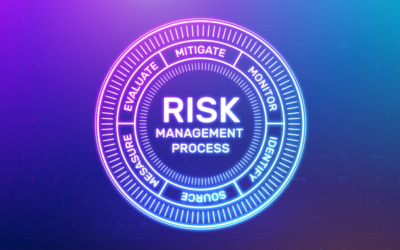In today’s fast-paced business environment, efficiency and cost-effectiveness are paramount. Organizations are increasingly turning to technology-driven solutions to streamline their operations. One area that has undergone significant transformation is procurement, with the emergence of E-Procurement Solutions revolutionizing how businesses manage their purchasing processes.
E-Procurement Solutions encompass a range of digital tools and platforms designed to automate and optimize the entire procurement lifecycle. From requisitioning and sourcing to invoicing and supplier management, these solutions leverage technology to simplify workflows, enhance transparency, and drive strategic decision-making.
The Need for E-Procurement Solutions
Traditional paper-based procurement processes are not only time-consuming but also prone to errors and inefficiencies. Manual tasks such as filling out purchase orders, obtaining approvals, and reconciling invoices can lead to delays, data inaccuracies, and increased operational costs. Moreover, the lack of visibility into procurement activities makes it challenging for organizations to track spending, negotiate favorable contracts, and mitigate risks effectively.
E-Procurement Solutions are a game-changer for businesses looking to modernize their procurement practices. By digitizing and automating routine tasks, these solutions offer numerous benefits:
Benefits of E-Procurement Solutions
- Streamlined Workflows: E-Procurement Solutions streamline the entire procurement process, from requisition to payment, eliminating paperwork and manual interventions. Automated workflows ensure that requests are routed efficiently, approvals are obtained promptly, and orders are processed accurately.
- Enhanced Visibility: With E-Procurement Solutions, organizations gain real-time visibility into their procurement activities. Dashboards and analytics tools provide insights into spending patterns, supplier performance, and compliance metrics, empowering decision-makers to identify cost-saving opportunities and make data-driven decisions.
- Cost Savings: By optimizing procurement processes and negotiating better terms with suppliers, E-Procurement Solutions help organizations reduce costs and maximize savings. Centralized contract management, bulk purchasing capabilities, and supplier consolidation contribute to improved efficiency and economies of scale.
- Improved Compliance: E-Procurement Solutions enable organizations to enforce compliance with internal policies and regulatory requirements. Built-in controls and audit trails ensure that procurement activities adhere to predefined rules and standards, reducing the risk of non-compliance and associated penalties.
- Strategic Supplier Management: E-Procurement Solutions facilitate strategic supplier management by providing insights into supplier performance, quality metrics, and delivery times. Organizations can evaluate supplier relationships, identify preferred vendors, and negotiate mutually beneficial agreements, fostering long-term partnerships and driving innovation.
Transitioning to E-Procurement Solutions
Making the transition from paper-based processes to E-Procurement Solutions requires careful planning and execution. Here are some key steps to consider:
- Assess Current Processes: Conduct a thorough assessment of your existing procurement processes to identify pain points, inefficiencies, and areas for improvement.
- Define Requirements: Clearly define your requirements and objectives for implementing E-Procurement Solutions. Consider factors such as scalability, integration capabilities, user experience, and budget constraints.
- Select the Right Solution: Research and evaluate E-Procurement Solutions based on your requirements and budget. Consider factors such as functionality, ease of use, vendor reputation, and customer support.
- Customization and Integration: Customize the E-Procurement Solution to align with your organization’s specific needs and requirements. Ensure seamless integration with existing systems such as ERP, accounting, and inventory management software.
- User Training and Adoption: Provide comprehensive training and support to users to ensure smooth adoption of the new system. Communicate the benefits of E-Procurement Solutions and address any concerns or resistance to change.
- Continuous Improvement: Monitor and evaluate the performance of E-Procurement Solutions regularly. Solicit feedback from users and stakeholders, and make adjustments as necessary to optimize system performance and user experience.
What We Offer
At ELIT, we understand the complexities and challenges associated with transitioning to E-Procurement Solutions. Our comprehensive suite of tools and services is designed to support organizations every step of the way. Here’s how we can help:
- Customized Solutions: We tailor our E-Procurement platforms to meet your specific needs, ensuring seamless integration with your existing systems.
- Expert Support: Our team of experts provides in-depth training and continuous support to ensure smooth adoption and optimal use of our solutions.
- Scalable Platforms: Our E-Procurement Solutions are scalable, allowing you to grow and adapt as your business needs evolve.
- Data-Driven Insights: Utilize our advanced analytics and reporting tools to gain valuable insights into your procurement activities and make informed decisions.
- Supplier Management: Improve your supplier relationships with our strategic supplier management tools, designed to enhance collaboration and drive innovation.
By partnering with ELIT, you can leverage the power of E-Procurement Solutions to streamline your procurement processes, enhance visibility, achieve cost savings, and foster strategic supplier relationships.
Conclusion
Transitioning to E-Procurement Solutions represents a significant step forward for organizations looking to modernize their procurement processes and drive business success. By embracing technology and automation, businesses can streamline workflows, enhance visibility, and achieve cost savings while fostering strategic supplier relationships and ensuring compliance with regulatory requirements.
The journey from paper to pixels may require effort and investment, but the benefits of E-Procurement Solutions far outweigh the challenges. With the right strategy, tools, and mindset, organizations can unlock new levels of efficiency, agility, and competitiveness in today’s digital economy.
E-Procurement Solutions are not just a technology upgrade; they are a strategic imperative for organizations looking to thrive in an increasingly complex and competitive business landscape. Embrace the power of E-Procurement Solutions with ELIT and embark on a journey toward procurement excellence today.
INTERESTED TO KNOW MORE?
CLICK THE BELOW BUTTON TO SCHEDULE A DEMO WITH US!





